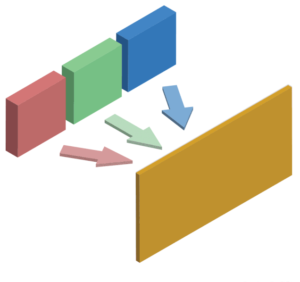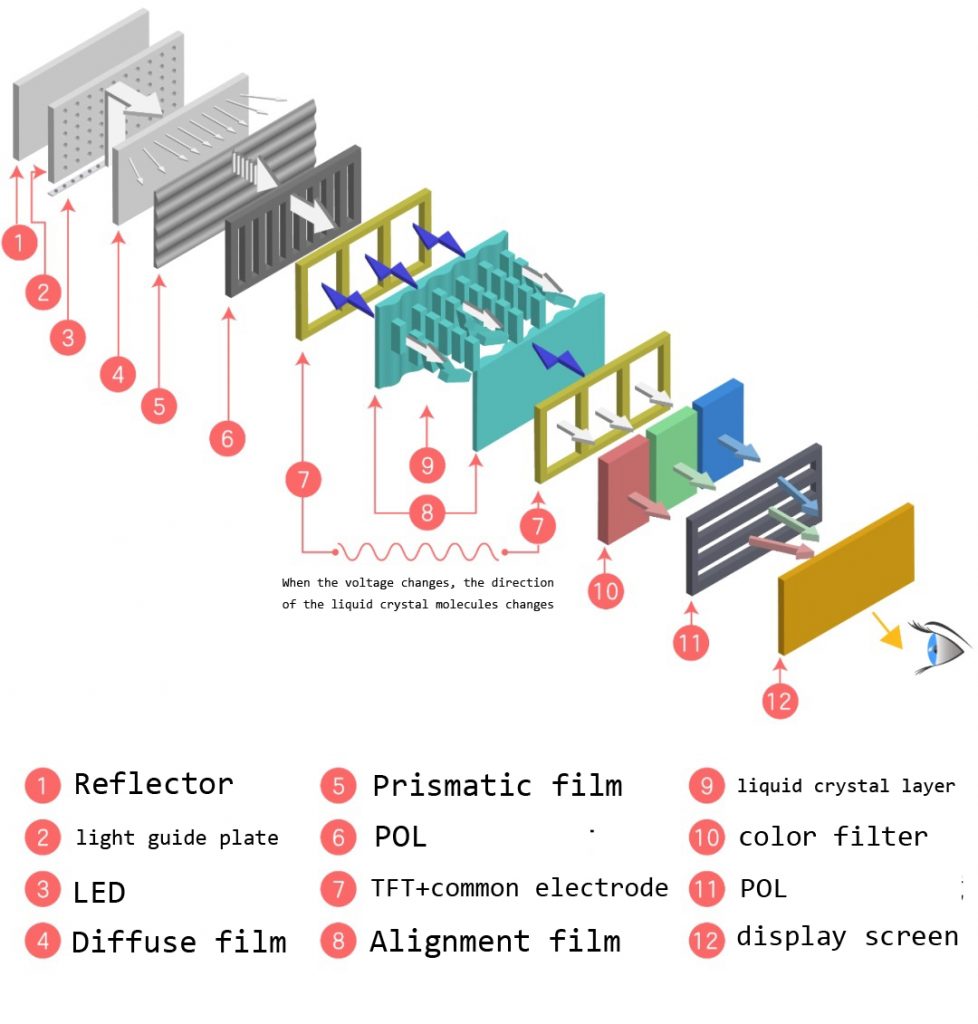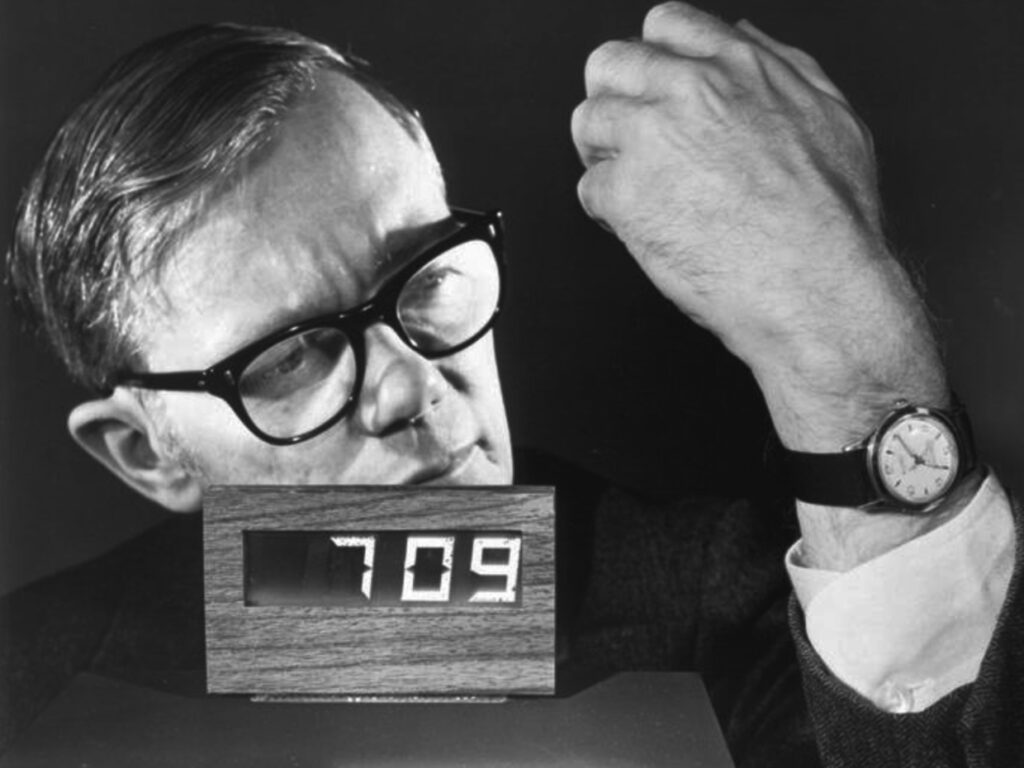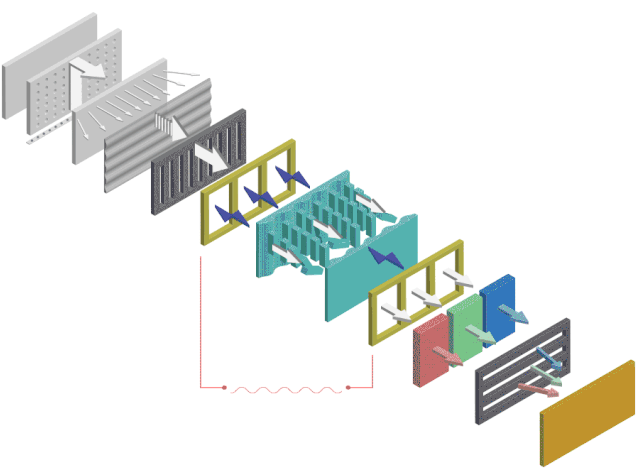The screen is composed of tens of thousands of pixels, and each pixel is composed of three sub-pixels of red, green and blue. The various colors seen on LCD and OLED screens are mixed by adjusting the brightness and darkness of the three sub-pixels of red, green and blue, thereby mixing a variety of colors.

At present, the mainstream screen materials on the market are divided into two categories:
LCD (Liquid Crystal Display, liquid crystal display)
OLED (Organic Light-Emitting Diode, organic light-emitting diode)
What is the difference between these two materials? Which one should we choose when purchasing?
Let’s take a look at the principles of LCD and OLED screens to achieve display.
In the current LCD and OLED screens, each sub-pixel has at least 256 levels of brightness, that is to say, these 3 sub-pixels can mix more than 16 million colors.
So how are LCD and OLED realized?
LCD screen
The normal operation of the LCD screen is inseparable from the backlight layer (emitting white light) and the liquid crystal layer (regulating the brightness of the light).
In order to better understand the working principle of the LCD screen, let’s first look at the structure of the LCD screen, as shown in the figure below.

Reflector: Similar to the reflector when taking pictures, it reflects light back and improves the brightness of the screen.
Light guide plate: convert the line light source emitted by the LED lamp into a surface light source, so that the brightness of the screen is uniform.
Diffusion film: Similar to the soft light when taking pictures, it diffuses the light and makes the light softer.
Prism film: filter out the light that does not conform to the angle, so that the light angle is more standardized.
The liquid crystal layer and other layers of materials also play an integral role in the LCD display.
Bottom (vertical) polarizer: only allows light in the vertical direction to pass through, the rest is filtered out.
TFT (Thin Film Transistor, Thin Film Field Effect Transistor): Adjust the voltage of each sub-pixel (red, green and blue) to adjust the degree of twisting of the liquid crystal molecules, thereby controlling the brightness of the sub-pixel.
Alignment film: used to clamp liquid crystal.
Liquid crystal layer: Like a regulating valve, it controls the amount and direction of light.
Common electrode: used to apply voltage to the liquid crystal layer to maintain the voltage of the entire pixel.
Color filter film: Composed of red, green, and blue, it allows the LCD screen to display a variety of colors.
Top (horizontal) polarizer: only allows light in the horizontal direction to pass through, the rest is filtered out.
You can see the specific implementation process of the LCD screen through the following animation.
1. When we light up the screen, the LED starts to emit white light, and through the light guide plate, the line light source is converted into a surface light source, making the light uniform and illuminating the entire screen (at the same time, the reflector on the left will reflect the light back , increasing the overall brightness).
2. The light passes through the diffuser film, allowing the light to diffuse, and the area becomes larger, making the light softer.
3. The light passes through the prism film, and only the light that meets the angle will be emitted to ensure that the light is going in the correct direction.
4. The light passes through the bottom vertical polarizer, only the light in the vertical direction passes through, and the light in other directions is filtered out.
5. TFT controls the voltage of each sub-pixel according to the needs of color display, and the voltage affects the degree of twisting of liquid crystal molecules, thereby controlling the brightness and direction of light passing through the liquid crystal layer.
6. The sub-pixel light passing through the liquid crystal layer passes through the color filter film, and then passes through the horizontal polarizer on the top, so that the desired color can be seen on the screen.

